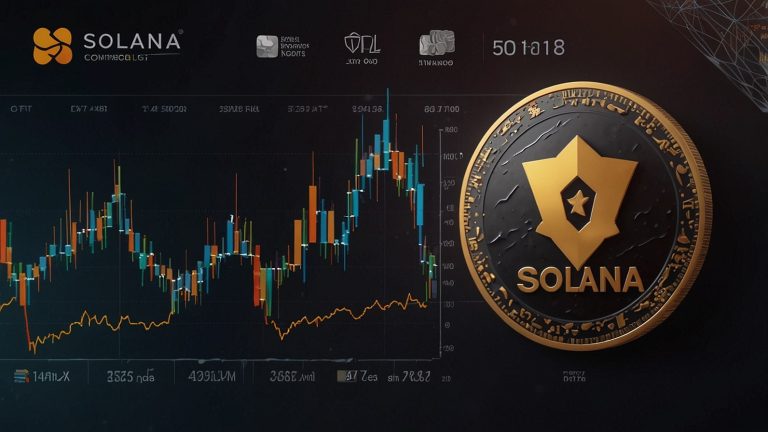The world of online retail has entered a new era. Modern consumers expect more than convenience; they crave discovery, personalisation, and meaningful connection. Through innovative shopping platforms such as this emerging European fashion marketplace, the act of buying has become an experience of exploration. These platforms combine style, technology, and curated variety, helping shoppers uncover new brands that reflect their identity rather than just their needs.
The modern customer journey is no longer linear. Shoppers no longer visit an online store with a clear intention to purchase a specific product; they arrive open-minded, looking for inspiration. This shift from transactional shopping to experiential discovery is redefining how brands are introduced, perceived, and remembered.
The Evolution of Digital Commerce
In the early years of e-commerce, success depended on speed, price, and accessibility. Retailers competed to offer the widest selection and fastest delivery, while the emotional aspect of shopping was largely ignored. Yet as digital ecosystems evolved, consumer behaviour changed.
Today’s shoppers, particularly millennials and Gen Z, want online retail experiences that feel personal and purposeful. They expect brands to understand their values, preferences, and sense of style. As a result, modern e-commerce is no longer just a marketplace; it’s a discovery ecosystem designed to connect users with brands that fit their personality.
From Utility to Experience
Traditional e-commerce was built for convenience; modern platforms are built for connection. Instead of a simple search-and-buy approach, the new model encourages discovery through personalisation and storytelling.
Artificial intelligence, trend analytics, and behavioural insights allow online platforms to curate homepages that feel uniquely designed for each visitor. Whether it’s showcasing seasonal fashion collections, lifestyle products, or eco-friendly choices, these recommendations are guided by real-time data and individual preference.
This transformation is changing how consumers discover new labels. Brands that once relied solely on paid advertising or influencer promotions now have a direct channel to reach audiences who genuinely care about what they offer.
Technology: The New Engine of Discovery
The foundation of this revolution lies in data intelligence and machine learning. Modern e-commerce systems analyse browsing patterns, social signals, and purchase history to predict what each shopper might like next.
AI-Driven Personalization
Artificial intelligence now determines product visibility, helping users find styles or collections that match their taste before they even search for them. Platforms that master this capability convert curiosity into loyalty, transforming casual visitors into returning customers.
Augmented Reality and Visualisation Tools
With AR and virtual try-ons, shoppers can visualise how a garment fits or how furniture looks in their space. This interactive experience reduces uncertainty and adds emotional value, bridging the gap between digital and physical retail.
Voice and Visual Search
Visual search tools allow users to upload an image to find similar products instantly. Voice-activated search enables hands-free browsing, making the shopping experience faster and more intuitive.
Together, these technologies are rewriting the rules of online discovery by making it intelligent, immersive, and deeply personal.
Personalisation as a Brand-Building Strategy
A report by Shopify revealed that over 75% of consumers prefer retailers that personalise their shopping experiences. This finding underscores a fundamental truth: personalisation is no longer optional; it’s the cornerstone of digital brand strategy.
Leading platforms interpret personal data ethically to provide product recommendations that feel natural, not intrusive. When consumers encounter products that genuinely resonate with their taste, they perceive the brand as attentive and aligned with their lifestyle.
This subtle form of connection not only increases sales but also builds trust, the foundation of long-term customer relationships.
Social Commerce and Community Influence
Social media has evolved into a powerful discovery engine. Platforms like Instagram, TikTok, and Pinterest influence what consumers want before they even realise it. Forward-thinking e-commerce sites now integrate these social cues directly into their design.
Instead of relying on passive product listings, they create interactive discovery journeys inspired by community trends, influencer collaborations, and user-generated content. Consumers see real people using products in real contexts, which enhances trust and accelerates decision-making.
Some platforms even curate their homepages around viral aesthetics or micro-trends emerging on social media. This strategy keeps the experience dynamic and encourages users to explore beyond familiar brands.
Empowering Emerging and Niche Brands
One of the most exciting aspects of modern e-commerce is its ability to democratize exposure. Smaller labels and niche creators can now reach global audiences without massive marketing budgets.
Curated digital marketplaces feature independent designers alongside established names, levelling the playing field. Platforms like Voghion support smaller brands by providing visibility and guidance as they grow, helping them connect with broader audiences. Consumers discover new voices, while brands gain credibility through platform association.
For many shoppers, this inclusivity adds authenticity. They’re not just buying products; they’re supporting creativity, sustainability, and innovation. It’s a mutually beneficial relationship that strengthens the emotional dimension of online retail.
The Data-Driven Consumer Era
Every click, scroll, and purchase contributes to a wealth of behavioural data. Successful platforms understand how to interpret this information responsibly to enhance the user experience.
By identifying purchase patterns, they anticipate demand, adjust pricing strategies, and refine content presentation. Predictive analytics also helps brands plan collections and marketing campaigns around emerging trends rather than reacting to them.
This proactive approach benefits both sides: users enjoy more relevant content, and retailers achieve higher conversion rates through targeted visibility.
Cross-Border Commerce and Cultural Discovery
The boundaries of retail have dissolved. Cross-border e-commerce connects consumers with global brands, allowing them to experience styles, materials, and aesthetics that were once inaccessible.
International platforms curate collections that reflect cultural diversity, ranging from European minimalism to Asian streetwear and sustainable African designs. Voghion, for instance, bridges European fashion aesthetics with global audiences, helping shoppers explore emerging brands beyond borders.
Global reach also encourages collaboration among designers, enabling them to share audiences and influence trends across continents. Discovery, in this sense, becomes not just personal but cultural.
Sustainability as a Discovery Filter
A growing segment of online shoppers makes purchasing decisions based on environmental and ethical considerations. They prefer brands that emphasise transparency, fair production, and eco-friendly materials.
Modern platforms now incorporate sustainability filters, allowing users to prioritise products aligned with their values. This evolution turns ethical responsibility into a discovery feature rather than a marketing slogan.
By promoting conscious consumption, e-commerce is influencing industries to adopt greener practices,
proving that discovery can drive not only sales but also social progress.
The Balance Between Automation and Authenticity
Despite all technological advancements, authentic storytelling remains irreplaceable. Algorithms can guide users toward products, but it’s the human element, a brand’s voice, narrative, and mission that turns interest into loyalty.
Successful e-commerce platforms strike a balance between automation and authenticity. They use data to personalise, but maintain a genuine tone that mirrors a real human connection.
This combination of intelligence and empathy ensures that brand discovery feels intuitive yet sincere, a crucial factor in building trust in the digital marketplace.
Challenges of the New Discovery Model
As e-commerce grows more complex, several challenges emerge:
- Data Privacy and Transparency: Consumers demand to know how their information is used. Ethical data practices are essential to maintain trust.
- Information Overload: With thousands of brands and trends, guiding users without overwhelming them requires careful curation.
- Maintaining Differentiation: As personalisation becomes standard, platforms must find creative ways to stand out through design, storytelling, and community engagement.
These challenges highlight that the future of discovery isn’t just technological, it’s philosophical. The goal is not only to predict what consumers want but to understand why they want it.
The Future of E-Commerce Discovery
The next phase of digital retail will integrate personalisation with emotional intelligence. Platforms will combine predictive algorithms with contextual understanding, recognising not only what consumers browse, but what inspires them.
Immersive technologies like virtual stores, interactive fashion shows, and AI-driven stylists will make discovery even more fluid. Consumers will be guided not by static categories but by experiences tailored to their lifestyle moments.
As personalisation becomes more refined, shopping will transform into a continuous cycle of learning, exploring, and belonging, blurring the line between retail, entertainment, and identity
Conclusion
The way people discover brands online has evolved from mechanical search to emotional connection. Modern e-commerce platforms no longer serve as digital shelves; they function as dynamic ecosystems that blend creativity, technology, and personalisation.
By turning browsing into discovery, these platforms enable consumers to find products that align with who they are, not just what they need. This evolution represents a deeper relationship between shoppers and brands, built on relevance, trust, and shared values.
As innovation continues, the future of e-commerce will belong to those who can make discovery not only intelligent but meaningful, where every interaction feels uniquely designed for the individual behind the screen.













 Bitcoin
Bitcoin  Ethereum
Ethereum  Tether
Tether  XRP
XRP  USDC
USDC  Lido Staked Ether
Lido Staked Ether  TRON
TRON  Cardano
Cardano  Avalanche
Avalanche  Toncoin
Toncoin  Wrapped SOL
Wrapped SOL